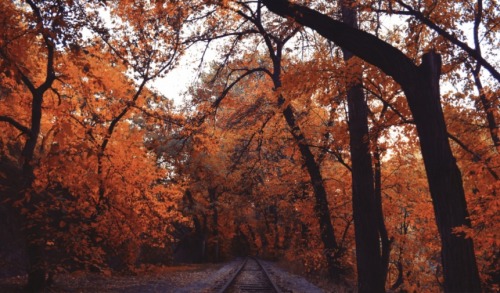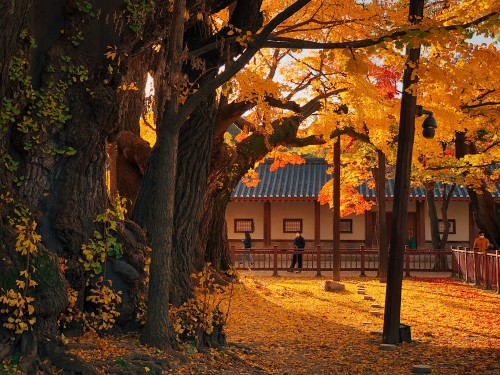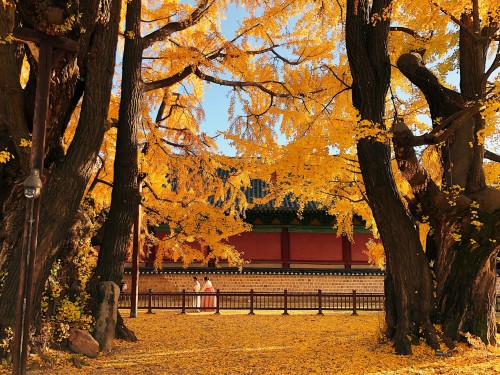(via 500px / …… By Fabrizio Riccardo Castorina)

(via 500px / …… by Fabrizio Riccardo Castorina)
More Posts from Monstrous-mind and Others

Siesta (by big andrei)
Ten interesting facts about Jupiter
Here is a list of some interesting facts about the planet Jupiter. A planet that catches the attention of all, by its size, storms and its surprising moons.

The mass of Jupiter is 318 times as massive as the Earth. In fact, Jupiter is 2.5 times more massive than all of the other planets in the Solar System combined.

Its gravity is so strong that a rocket would have to go an unthinkable 135,000 mph to leave.

The Great Red Spot on Jupiter is one of its most familiar features. This persistent anticyclonic storm, which is located south of its equator, measures between 24,000 km in diameter and 12–14,000 km in height. As such, it is large enough to contain two or three planets the size of Earth’s diameter. And the spot has been around for at least 350 years, since it was spotted as far back as the 17th century.

Jupiter’s rings were discovered in 1979 by the passing Voyager 1 spacecraft, but their origin was a mystery. Data from the Galileo spacecraft that orbited Jupiter from 1995 to 2003 later confirmed that these rings were created by meteoroid impacts on small nearby moons.

Extending up to seven million kilometers in the Sun’s direction and almost to the orbit of Saturn in the opposite direction, Jupiter’s magnetosphere is the largest and most powerful of any planetary magnetosphere in the Solar System, and by volume the largest known continuous structure in the Solar System after the heliosphere.

Jupiter has a total of 69 natural satellites. The four largest are: Io, Europa, Ganymede and Callisto. However, it is estimated that the planet has over 200 natural satellites orbiting it. Almost all of them are less than 10 kilometers in diameter, and were only discovered after 1975, when the first spacecraft (Pioneer 10) arrived at Jupiter.

Jupiter Has Been Visited 8 Times By Spacecraft. Jupiter was first visited by NASA’s Pioneer 10 spacecraft in December 1973, and then Pioneer 11 in December 1974. Then came the Voyager 1 and 2 flybys, both of which happened in 1979. This was followed by a long break until Ulysses arrived in February 1992, followed by the Galileo space probe in 1995. Then Cassini made a flyby in 2000, on its way to Saturn. And finally, NASA’s New Horizons spacecraft made its flyby in 2007. NASA’s Juno spacecraft is currently orbiting Jupiter.

Jupiter is the third brightest object in the Solar System, after Venus and the Moon.

Jupiter Is The Fastest Spinning Planet In The Solar System. For all its size and mass, Jupiter sure moves quickly. In fact, with an rotational velocity of 12.6 km/s (~7.45 m/s) or 45,300 km/h (28,148 mph), the planet only takes about 10 hours to complete a full rotation on its axis. And because it’s spinning so rapidly, the planet has flattened out at the poles a little and is bulging at its equator.

Jupiter Cannot Become A Star. Astronomers call Jupiter a failed star, but that’s not really an appropriate description. While it is true that, like a star, Jupiter is rich in hydrogen and helium, Jupiter does not have nearly enough mass to trigger a fusion reaction in its core. This is how stars generate energy, by fusing hydrogen atoms together under extreme heat and pressure to create helium, releasing light and heat in the process.
This is made possible by their enormous gravity. For Jupiter to ignite a nuclear fusion process and become a star, it would need more than 70 times its current mass. If you could crash dozens of Jupiters together, you might have a chance to make a new star. But in the meantime, Jupiter shall remain a large gas giant with no hopes of becoming a star. Sorry, Jupiter!
Sources: universetoday and wikipedia
Images credits: Wikimedia Commons, JAXA, NASA, ESA, Hubble, Wang Letian & Michael Carroll

The NASA/ESA Hubble Space Telescope captures the iridescent tapestry of star birth in a neighbouring galaxy in this panoramic view of glowing gas, dark dust clouds, and young, hot stars.
Credit: NASA/ESA and the Hubble Heritage Team (AURA/STScI/HEIC)


🍂🍁🍂🎃🌎









Beautiful ginkgo trees at historic Sungkyunkwan University.
#Cool
What’s Enceladus?
Before we tell you about Enceladus, let’s first talk about our Cassini spacecraft…
Our Cassini mission to Saturn is one of the most ambitious efforts in planetary space exploration ever mounted. Cassini is a sophisticated robotic spacecraft orbiting the ringed planet and studying the Saturnian system in detail.

Cassini completed its initial four-year mission to explore the Saturn System in June 2008. It has also completed its first mission extension in September 2010. Now, the health spacecraft is making exciting new discoveries in a second extension mission!
Enceladus

Enceladus is one of Saturn’s many moons, and is one of the brightest objects in our solar system. This moon is about as wide as Arizona, and displays at least five different types of terrain. The surface is believed to be geologically “young”, possibly less than 100 million years old.
Cassini first discovered continually-erupting fountains of icy material on Enceladus in 2005. Since then, the Saturn moon has become one of the most promising places in the solar system to search for present-day habitable environments.

Scientists found that hydrothermal activity may be occurring on the seafloor of the moon’s underground ocean. In September, it was announced that its ocean –previously thought to only be a regional sea – was global!
Since Cassini is nearing the end of its mission, we are able to make a series of three close encounters with Enceladus, one of Saturn’s moons.
Close Encounters
On Oct. 14, Cassini performed a mid-range flyby of Enceladus, but the main event will take place on Oct. 28, when Cassini will come dizzyingly close to the icy moon. During this flyby, the spacecraft will pass a mere 30 miles above the moon’s south polar region!

This will be the deepest-ever dive through the moon’s plume of icy spray, where Cassini can collect images and valuable data about what’s going on beneath the frozen surface.
Make sure to follow us on Tumblr for your regular dose of space: http://nasa.tumblr.com
🐈🐾🍁🍂🎃🍂🍁🌨🌄

🌌🏞️🏔️🍂🍁


mikkolagerstedt
-
 finnicksstrident reblogged this · 3 months ago
finnicksstrident reblogged this · 3 months ago -
 motylek reblogged this · 3 months ago
motylek reblogged this · 3 months ago -
 its-always-october reblogged this · 4 months ago
its-always-october reblogged this · 4 months ago -
 shannybangbang liked this · 5 months ago
shannybangbang liked this · 5 months ago -
 reddevil-23 liked this · 5 months ago
reddevil-23 liked this · 5 months ago -
 bigblocksls08 reblogged this · 5 months ago
bigblocksls08 reblogged this · 5 months ago -
 bigblocksls08 liked this · 5 months ago
bigblocksls08 liked this · 5 months ago -
 dullhare liked this · 5 months ago
dullhare liked this · 5 months ago -
 fantasticearthanimals reblogged this · 5 months ago
fantasticearthanimals reblogged this · 5 months ago -
 avengedthedead liked this · 6 months ago
avengedthedead liked this · 6 months ago -
 avengedthedead reblogged this · 6 months ago
avengedthedead reblogged this · 6 months ago -
 pa-nos reblogged this · 6 months ago
pa-nos reblogged this · 6 months ago -
 pa-nos liked this · 6 months ago
pa-nos liked this · 6 months ago -
 -withallmyheartandsoul reblogged this · 6 months ago
-withallmyheartandsoul reblogged this · 6 months ago -
 its-always-october reblogged this · 6 months ago
its-always-october reblogged this · 6 months ago -
 shit-fxck-damn reblogged this · 6 months ago
shit-fxck-damn reblogged this · 6 months ago -
 tinyspookyhorror reblogged this · 6 months ago
tinyspookyhorror reblogged this · 6 months ago -
 jaymacfee liked this · 6 months ago
jaymacfee liked this · 6 months ago -
 mystic-witch-things reblogged this · 6 months ago
mystic-witch-things reblogged this · 6 months ago -
 the-sun-will-rise-again-25 reblogged this · 6 months ago
the-sun-will-rise-again-25 reblogged this · 6 months ago -
 the-sun-will-rise-again-25 liked this · 6 months ago
the-sun-will-rise-again-25 liked this · 6 months ago -
 valleylillies liked this · 6 months ago
valleylillies liked this · 6 months ago -
 sapphic-minty-citrus reblogged this · 6 months ago
sapphic-minty-citrus reblogged this · 6 months ago -
 sanguine-succubus reblogged this · 6 months ago
sanguine-succubus reblogged this · 6 months ago -
 fairymage3 liked this · 6 months ago
fairymage3 liked this · 6 months ago -
 cromwellwitch reblogged this · 6 months ago
cromwellwitch reblogged this · 6 months ago -
 butterscotcheye reblogged this · 6 months ago
butterscotcheye reblogged this · 6 months ago -
 she-is-art-to-me liked this · 7 months ago
she-is-art-to-me liked this · 7 months ago -
 taco5555555 liked this · 7 months ago
taco5555555 liked this · 7 months ago -
 giizemella reblogged this · 7 months ago
giizemella reblogged this · 7 months ago -
 ponywings liked this · 7 months ago
ponywings liked this · 7 months ago -
 burnmyloveaway liked this · 7 months ago
burnmyloveaway liked this · 7 months ago -
 this-must-be-the-feeling reblogged this · 7 months ago
this-must-be-the-feeling reblogged this · 7 months ago -
 hymne-alamour liked this · 7 months ago
hymne-alamour liked this · 7 months ago -
 bordeauxlips reblogged this · 7 months ago
bordeauxlips reblogged this · 7 months ago -
 bordeauxlips liked this · 7 months ago
bordeauxlips liked this · 7 months ago -
 noceurash reblogged this · 7 months ago
noceurash reblogged this · 7 months ago -
 noceurash liked this · 7 months ago
noceurash liked this · 7 months ago -
 faantasizee liked this · 7 months ago
faantasizee liked this · 7 months ago -
 flawedmasterpiece13 liked this · 7 months ago
flawedmasterpiece13 liked this · 7 months ago -
 camberwell-when liked this · 7 months ago
camberwell-when liked this · 7 months ago -
 thelongestnight reblogged this · 7 months ago
thelongestnight reblogged this · 7 months ago -
 thelongestnight liked this · 7 months ago
thelongestnight liked this · 7 months ago -
 catladychronicles reblogged this · 7 months ago
catladychronicles reblogged this · 7 months ago -
 catladychronicles liked this · 7 months ago
catladychronicles liked this · 7 months ago -
 duwango reblogged this · 7 months ago
duwango reblogged this · 7 months ago -
 duwango liked this · 7 months ago
duwango liked this · 7 months ago -
 rebellious-sardine reblogged this · 7 months ago
rebellious-sardine reblogged this · 7 months ago
My ambition is handicapped by laziness. -C. Bukowski Me gustan las personas desesperadas con mentes rotas y destinos rotos. Están llenos de sorpresas y explosiones. -C. Bukowski. I love cats. Born in the early 80's, raised in the 90's. I like Nature, Autumn, books, landscapes, cold days, cloudy Windy days, space, Science, Paleontology, Biology, Astronomy, History, Social Sciences, Drawing, spending the night watching at the stars, Rick & Morty. I'm a lazy ass.
222 posts